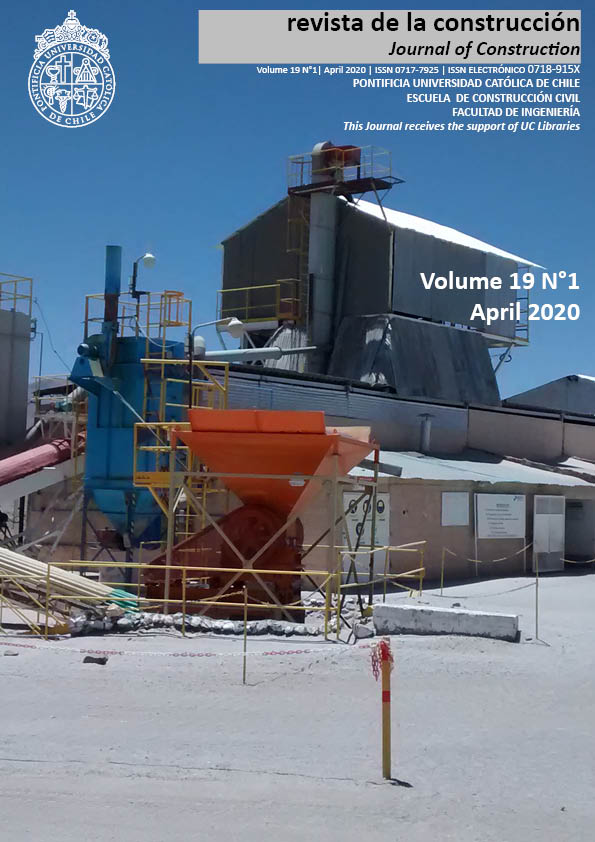Rehabilitation of historical ruined castles based on field study and laboratory analyses: The case of Bigalı Castle in Turkey
DOI:
https://doi.org/10.7764/RDLC.19.1.52-67Keywords:
Historical ruined castle, rehabilitation applications, cultural asset, Ottoman eraAbstract
The castle structures, which were designed for defense purposes during the period they were built, as a result of the loss of their functions over time, some of them disappear completely, while some of them survive to the present day as a ruin. The rehabilitation of the structures requires a scientific approach and a knowledge of the cultural background to preserve historical identity of the structures. Utilizing these kinds of specific knowledge and the scientific method, the aesthetic and historical values of the structure can be provided. Rehabilitations require an interdisciplinary approach to gain a full understanding of the construction technique and member properties and, also its material characteristics of the structures based on historical documents. In order to restore such structures to their authentic form and prolong their service life, the historical research that started on the date they were built and continued to the present day should be researched, and the material characteristics of the original structural members should be identified. The present study covers the rehabilitation works carried out on a historical ruined castle that was built as a defensive structure in the early 1800s, but has since lost its structural integrity and authentic form. The study is carried out in four stages, beginning with a research of the historical process of the ruined castle, followed by a field study, laboratory analyses and rehabilitation applications. The historical process of the castle was aimed to identify the structural changes that castle has undergone since its construction, while the field study involves a visual examination of the structural defects and the gathering of representative samples from different points of the structure. The laboratory analyses involve mechanical and density tests as well as chemical and mineralogical analyses on the gathered samples. At the last stage, rehabilitation applications were carried out based on the data obtained in the first three stages. In the scope of application works, the joint losses and abrasions to the castle walls was repaired using mixtures formulated through laboratory analyses, and degraded stones was replaced, taking into account their authentic form. Structural cracks were filled following the properties of the original materials. In the completion applications, the abraded and ruptured stones of the castle were completed taking into account the original sizes, types, construction techniques and masonry forms of the stones. As a result of all of the applications, the castle structure was rehabilitated to its authentic situation from ruin, allowing it to survive as an asset of cultural heritage. The study can be deemed important based on its focus on the geometric and material restoration of historical castles that have lost their structural integrity and authentic form, but also in its examination of a defensive structure that was built on the coast of the Aegean Sea in the Dardanelles.
Downloads
Downloads
Published
How to Cite
Issue
Section
License

This work is licensed under a Creative Commons Attribution-NonCommercial-NoDerivatives 4.0 International License.








